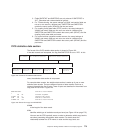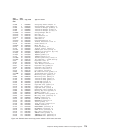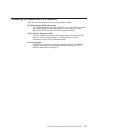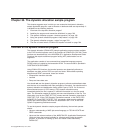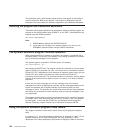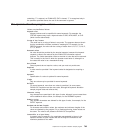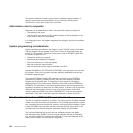
Chapter 30. The dynamic allocation sample program
This chapter suggests ways in which you can customize the dynamic allocation
sample application program, used to allocate or deallocate data sets dynamically. It
is divided into the following sections:
1. “Overview of the dynamic allocation program”
2. “Installing the program and transaction definitions” on page 782
3. “The dynamic allocation program—terminal operation” on page 782
4. “Using the dynamic allocation program’s Help feature” on page 782
5. “The dynamic allocation program—values” on page 783
6. “The flow of control when a DYNALLOC request is issued” on page 784.
Overview of the dynamic allocation program
The dynamic allocation (DYNALLOC) sample application program makes available
to the CICS terminal operator most of the functions of DYNALLOC (SVC 99). These
functions are described fully in the MVS/ESA SPL: Application Development Guide.
Functions that require authorized program facility (APF) authorization are not
supported.
The application consists of one command-level assembler-language program,
DFH99, which is invoked by the transaction ADYN. The source code is provided in
CICSTS32.CICS.SDFHSAMP.
Using DYNALLOC functions, the terminal operator can dynamically allocate or
deallocate any data set that CICS can open and close. With suitable operating
discipline and CEMT commands, these can include:
v Extrapartition transient data sets
v Journals
v Dump and trace data sets.
You should not use the dynamic allocation program to allocate and deallocate data
sets that are to be associated with files managed by file control. You should use the
dynamic allocation and deallocation facility which is part of CICS. If a file has not
been allocated as part of CICS startup, CICS dynamic allocation occurs
immediately before the file is opened, if sufficient information is in the file control
table. The information needed is the data set name and disposition of the file. This
information is set by the CEMT SET FILE master terminal transaction, described in
CEMT SET FILE, in the CICS Supplied Transactions manual, or the EXEC CICS
INQUIRE FILE and EXEC CICS SET FILE commands, which provide additional
inquiry and control facilities, and which are described in SET FILE, in the CICS
System Programming Reference manual.
To use the dynamic allocation sample program effectively, the terminal operator
should:
v Have an understanding of MVS job control language, or TSO ALLOCATE and
FREE commands.
v Have read the relevant sections of the MVS/ESA SPL: Application Development
Guide and have that manual available for reference while using the sample
program, in particular for looking up error and reason codes returned by
DYNALLOC.
© Copyright IBM Corp. 1977, 2011 781



